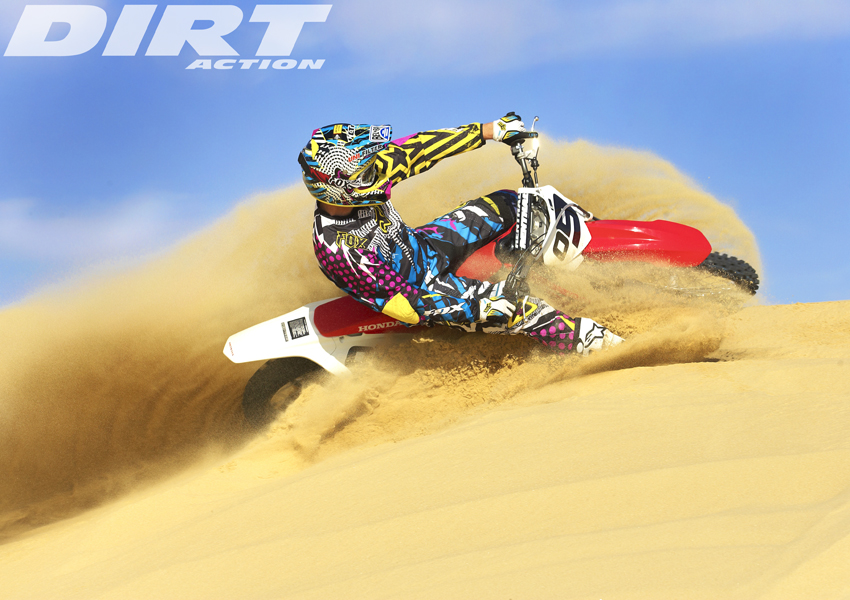SERIOUS INJURIES
WORDS BY SCOTT BISHOP
It seems that every time someone falls off a bike these days the injury’s much more serious than ever before. I don’t have any data to back that up — and I’m not sure if anyone does — but every crash these days seems to end with a visit to a hospital.
So, there are probably a couple of topics that need to be discussed here. Is the injury rate higher than ever before and, if so, why? Should data be kept on crashes and injuries so as a sport we can monitor what’s going on and get a better understanding of what’s happening on the track?
Let’s tackle part of that. From asking a few questions, the only people who seem to be collecting any information on crashes and injuries are RaceSafe. RaceSafe co-ordinator Simon Maas keeps a record of riders who’ve used the service over the past seven years, including what their injuries were and the venues where they occurred.
That allows him to know that when he goes to a track he can take a look at injuries sustained there in previous years to ensure he has the right people for the job. For example, tracks such as Coolum and Appin have shown higher rates of knee and ankle injuries than other venues, so Maas brings in the right medical people to ensure the best possible treatment at any particular track.
This is sensational for riders at the MX Nationals as RaceSafe is a now a necessary and permanent fixture at those events. From my understanding, MA and the state bodies don’t document or keep any history of injuries at state and regional events. If that’s the case, this needs to change as we want to keep as many riders involved in the sport as possible. Sure, it’s a dangerous sport and injuries occur but, the more info we have, perhaps the more injuries we can prevent along the way.
If we had the right data, we could also determine the rate of serious injury. I have no proof, but it sure feels like we’re seeing more serious injuries than before — or maybe we’re just hearing about it more. But barely a week goes by without someone somewhere in the world involved in a serious crash. Everyone seems to have an opinion why — faster bikes, four-strokes, two-strokes, tracks, jumps and on it goes — but no one really has the answers.
Injuries are a part of any sport but that doesn’t mean we have to just accept them. As a sport we need to continually look at ways at keeping our participants safer and enjoying their time on dirtbikes. It’s fun and it’s exciting, so let’s make it as safe as we can as well.
RIDERS REBEL
The opening round of the Victorian Motocross Championship saw plenty of controversy when riders turned up to a track that was all but unrideable due to overwatering. The Broadford circuit has always been a tough venue to prepare as the dirt is pretty ordinary there. Time and again it’s left riders angry with what they are asked to ride on.
Sure, it’s motocross and it’s meant to be a challenge, but flooding a track to the point where barely the best can get around isn’t going to win you any fans. When a rider hands over the entry fee, now often more than $100, all that he or she asks for is a good track and value for money. If you provide that they will return; if you don’t, there are other options for riders, including half that fee for a day at a ride park with as much ride time as they like.
Overwatering a track is never good. Riders will tend to follow the driest contour and this creates a one-line, down-to-the-rock track that will be dusty on the main line and a mud bog everywhere else. You can’t have good racing on a track like that.
Also, think of the expense the riders incur. On top of the entry for the event and the cost of getting to and from the venue, after an overly muddy event — that could have been avoided — riders are now generally up for chains, sprockets, brake pads and possibly a clutch, plus the time it takes to strip and rebuild a bike. At a time when we’re struggling to get riders to race meetings, this added cost won’t encourage them to come back.
All racers know the track might be a bit wet in practice and they accept that. But track prep isn’t just “flood it the night before and never touch it again”. It requires top-up watering during the day to keep dust down and moisture in the surface. Granted, some surfaces are harder to control and some don’t lend themselves to certain times of year. In other words, use softer tracks in the warmer months when storms or heavy watering will penetrate and harder surfaces in the middle of the year when they’re not getting baked by the summer sun.



